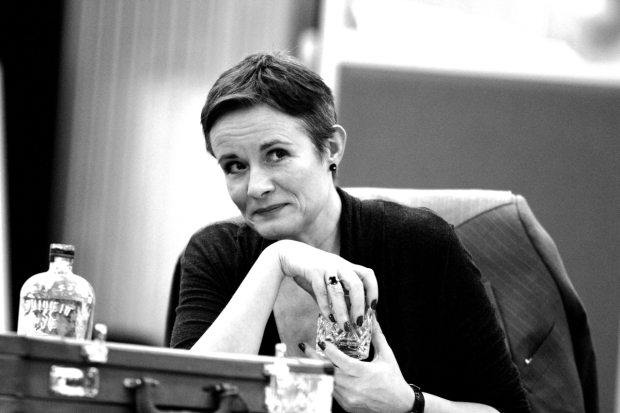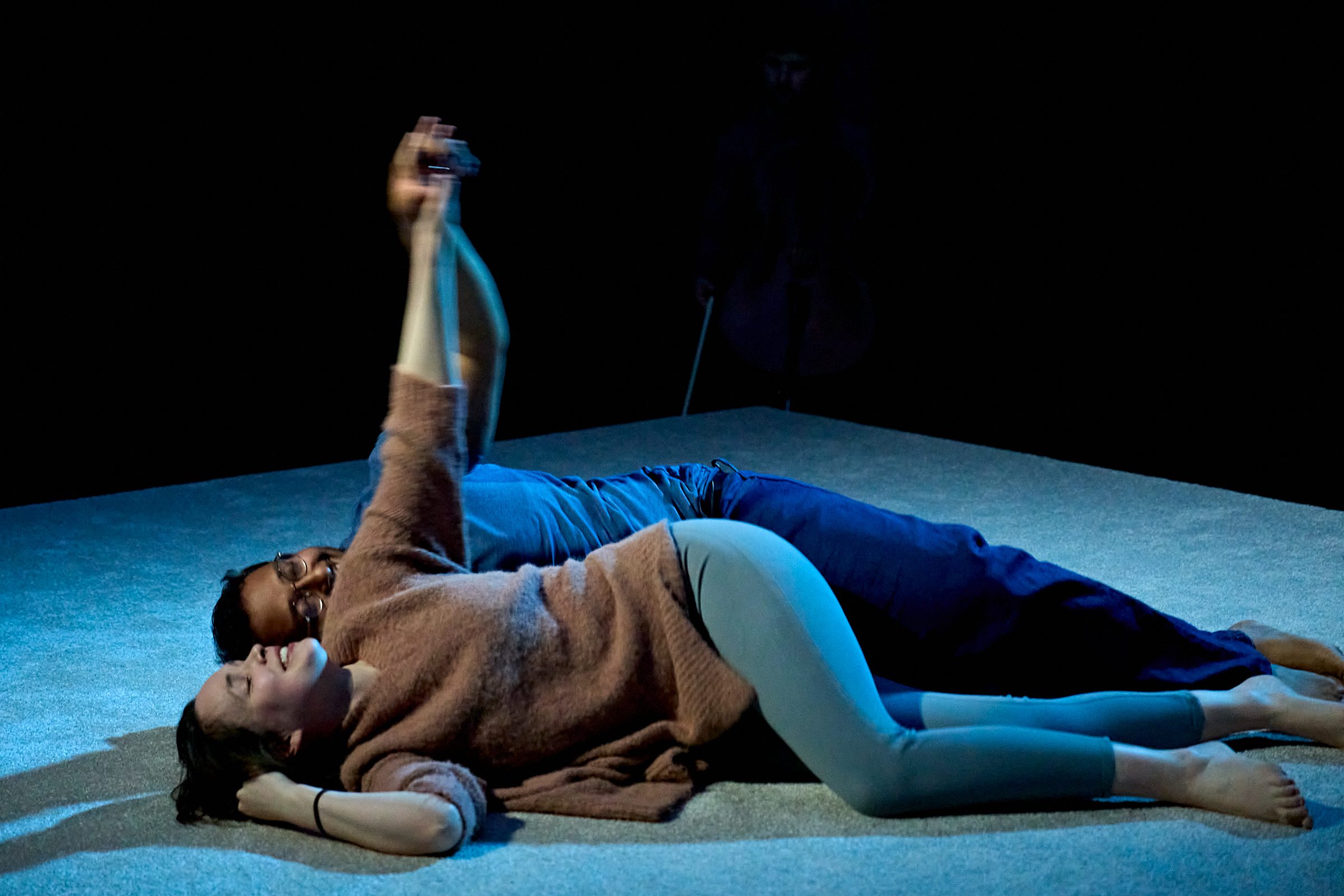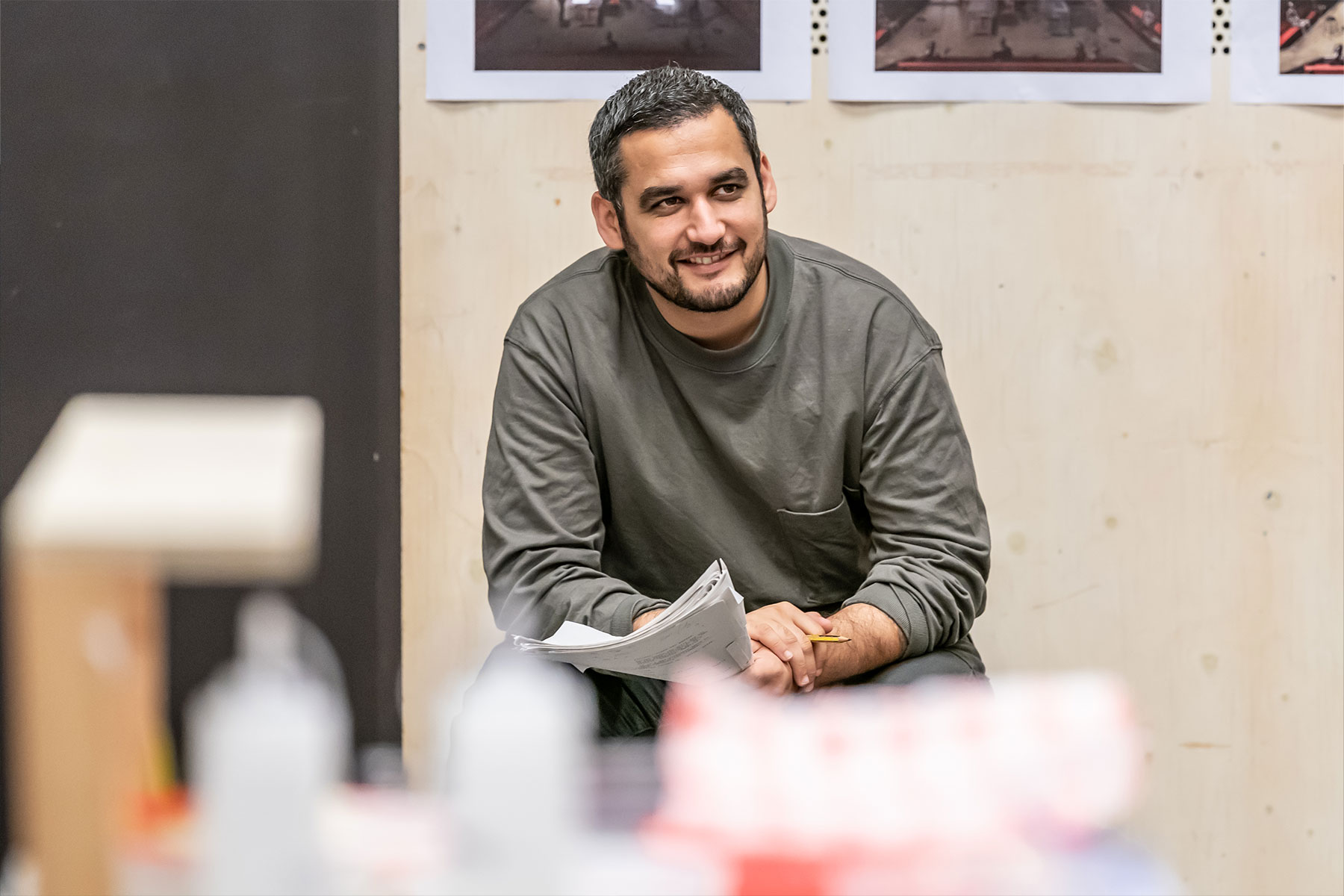Review: What the Butler Saw (Leicester Curve)
Fifty years ago Joe Orton was in the middle of writing what many people believe to be his masterpiece. It would be his last play, too, and neither would he see it performed, cruelly denied the chance as the victim of a brutal murder by his lover.
But in What the Butler Saw, set in a psychiatrist’s private clinic, Orton brings together themes that troubled and intrigued him – mental health, sexuality, identity, sex equality – and eerily points to both the darkness in his personal life and the tragedy that would come.
Nikolai Foster‘s riotous interpretation at Curve in Orton’s home city of Leicester is as funny as you would hope but asks challenging questions about chaos and order – who is in charge? Perhaps madness is all around us – and provides insight into the writer’s relationship with his partner Kenneth Halliwell (the presence of a straitjacket in the second act surely a metaphor for Halliwell’s hold over his more talented partner).
While imagery like this is powerful, made all the more vivid by Michael Taylor’s expert design – a white room, circular in shape with shafts of daylight reminding us there is an outside world – we are never allowed to dwell for too long as the pace of the production carries us forward.
Leading the charge is Jasper Britton as Dr Rance, a powerhouse performance as the inspector of mental institutions proclaiming all around him as insane including Dr Prentice (Rufus Hound) and the young secretary Prentice wants to seduce. 'I am a representative of order!' he screams. Britton’s vocal and physical command of the stage make him the one to watch, even down to the way his collar-length hair swishes about as he gets more animated. In the way that Captain Mainwaring in Dad’s Army felt the need to control every situation, Rance is the same, bellowing instructions.
Orton centres the action on Prentice but Rance is the better part. At one point Rance quietens down to reflect on the genius of the medical man who tutored him at university: 'Having failed to achieve madness himself, he took to teaching it to others.'
As with farce at its best, logic must be framed around the anarchy so that the (crazy) choices characters make can be understood as genuine options. Secretary Geraldine (Dakota Blue Richards) and police sergeant Match (Ravi Aujla) find themselves in various states of undress or having apparently swapped gender, and all of it triggered by Prentice’s panic that his wife (Catherine Russell, excellent as Mrs Prentice) will discover his plan to be unfaithful. The action is fast and furious (if anything it is too quick in the opening scene of act one, in that chunks of dialogue are lost as we try to adjust) but once it settles down this is a fabulously funny production (made in association with Theatre Royal Bath), and one that benefits enormously from the presence of Jack Holden as hotel page boy Nicholas Beckett.
Holden in a frock – a leopard-print number as it happens – and sporting a blonde bob with thick red lipstick is deliciously funny. He inhabits a quality that comes naturally to comedians: the art of being still. His best moments come when under pressure but frantically wrestling to compose himself, to retain the norm, if only for the briefest second to rearrange his dress.
The world premiere of What the Butler Saw, in March 1969 at the Queen’s Theatre in the West End of London, starred Ralph Richardson, Stanley Baxter and Coral Browne. Some of the audience were booing at what they saw, according to reports from the day. The Stage review understood why the 'audacity' of Orton and the themes he conjured might be hard to take for many but 'the first night booing from the gallery was ill-deserved'. Fifty years later his work stands the test of time, and to think anything other is – well, crazy.
What the Butler Saw runs at the Curve, Leicester until 18 March.












